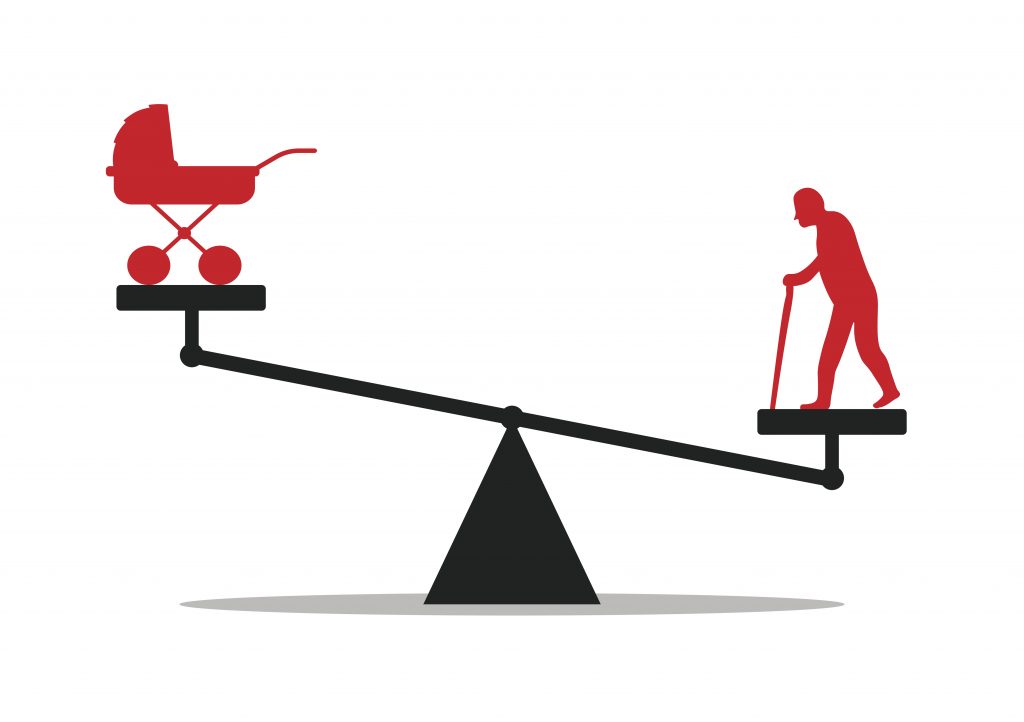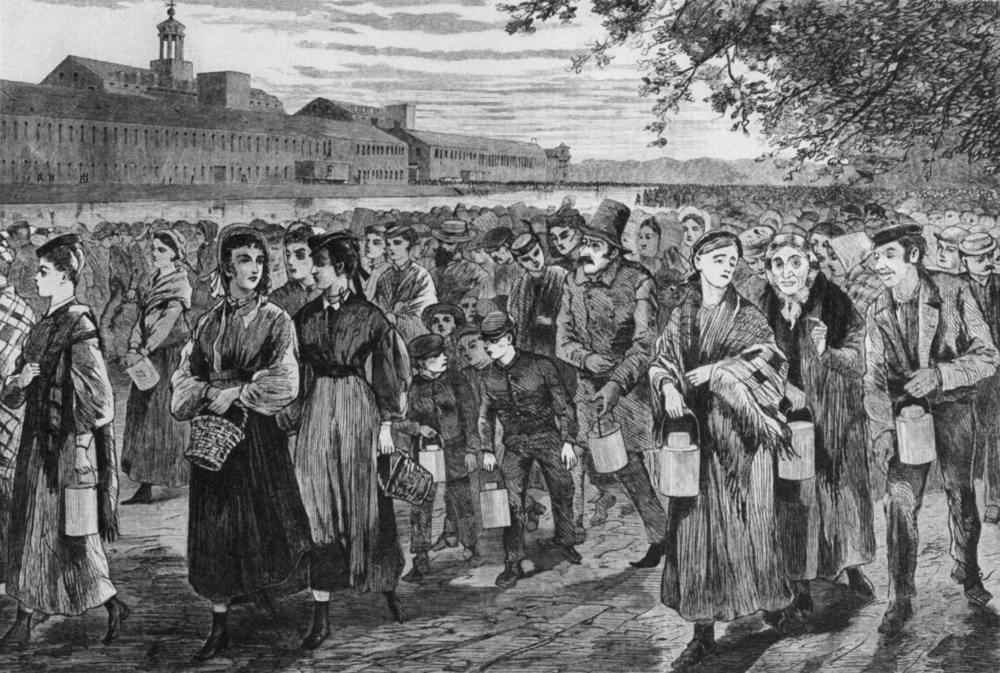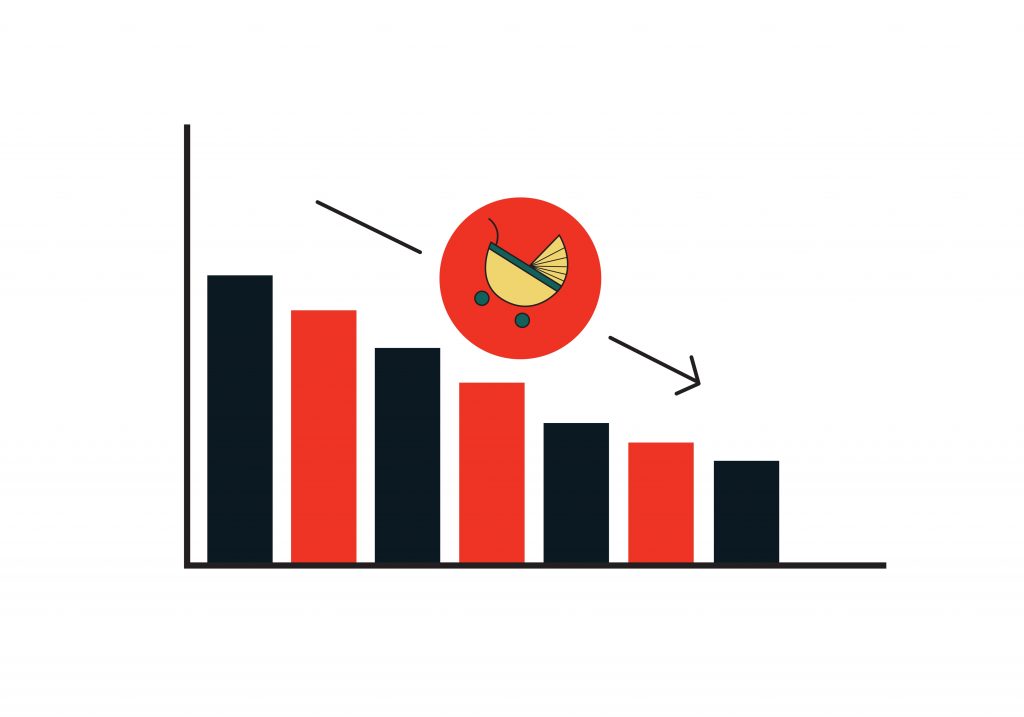Countries that are in Stage 4 of the Demographic Transition Model (DTM) are countries with low birth and death rates, such as Canada, Argentina, the United States, South Korea, Brazil, China, and many countries in Europe.
The DTM is a model that was developed in 1945 after Frank Notestein developed the Demographic Transition Theory that explained how fertility rates would impact the growth rate of a population.
Today, it is used to study trends in population and how events such as war or pandemics have an impact on a nation’s growth or decline.
The countries that are in Stage 4 of the Demographic Transition Model (DTM) are Canada, Argentina, the United States, China, Brazil, South Korea, and Argentina, just to name a few.
There are four stages of the DTM, although some experts argue that in some cases there are five stages.
In stage 4, birth and death rates are low as a result of natural factors occurring in the population such as industrialization and progressive changes to family lifestyles.
Table of Contents
What is the Demographic Transition Model (DTM)?

The Demographic Transition Model is a model that studies population trends in every country across the globe.
The most important factors considered in the DTM are birth rates and death rates, and why those numbers are the way that they are.
Every stage in the DTM indicates where a certain country stands when it comes to those trends.
In the earliest stages of the DTM, birth rates and death rates are high, while they decline in the later stages. In the latter stages, a country’s birth and death rates are lower or are on the decline.
A country’s population trends are important for many reasons, as the population of a country and its staging on the DTM is an indicator of the health of a country.
That could mean a country with a high death rate might have a serious issue going on that could impact the world, such as the Covid-19 pandemic or pandemics of eras gone by.
This example is transitory, which means that the death rates will revert to previous conditions once these social factors pass into the nation’s history.
Every country on the map is staged somewhere on this model, but not every stage has countries in it today.
What is Stage 1 of the DTM?
The first stage of the DTM is a stage where there are high birth rates and death rates. Many countries were here prior to the Industrial Revolution.
In this era, families had many children in order to sustain their own economy on the farm, the homestead, or just to stay in survival mode in countries all over the world.

The population trend in Stage 1 of the DTM is constant, but an event such as a war or epidemic can shift a country into Stage 1 of the DTM. Stage 1 of the DTM sees growth rates that are lower than 0.5 percent.
Much of this is caused by a lower food supply and less access to quality health care.
Additionally, less access to technology that can improve the quality of the food supply and health care will put a country into Stage 1. Today, there are no countries in Stage 1 of the Demographic Transition Model.
What is Stage 2 of the Demographic Transition Model (DTM)?
Stage 2 of the Demographic Transition Model is one that sees a decline in death rates, but birth rates are typically higher.
Countries such as Yemen, Palestine, Afghanistan, some countries in Africa, Guatemala, and Nauru are all in Stage 2. Generally speaking, developing countries are said to be in Stage 2 of the DTM.
That is due to the fact that their food supply and their sanitation efforts are not the same as those in developed countries.
That is not to say that developed countries are going to have better rates in population trends. Instead, a country in Stage 2 of the DTM is here because of a low death rate and a consistently high birth rate.
These countries see few improvements in health care and farming methods such as crop rotation, and factors such as an increase in literacy in women will lead to lower death rates and higher birth rates.
Population surges are common in these countries, and Afghanistan is a commonly cited example of a country in Stage 2 of the DTM.
The illiteracy rate of Stage 2 countries is also very high, and it is suggested by some world leaders that this is intentional in order to keep birth rates high and death rates low for economical gain.
Progression out of Stage 2 for countries like Afghanistan occurs when women and girls are encouraged to become educated, a move that would stabilize the population imbalance of any country in Stage 2.
What is Stage 3 of the Demographic Transition Model (DTM)?

Stage 3 of the DTM includes lower birth rates and better conditions in the economy. Women are more involved in the economy, and there is improved access to health care and methods such as contraception.
There is a more equal balance of population growth here, but urbanization helps to sustain population imbalances.
Contraception plays a significant role here in keeping balance in a population. When women are more involved in an economy, the economy becomes more developed and naturally, this will play a role in birth rates as well.
Women have less time for building families when they are educating themselves or working.
Families also do not have the finances for a large family of seven or eight children anymore because life is more industrialized and expensive.
Countries in Stage 3 of the DTM are often struggling to become more developed and know the importance of education and a thriving workforce.
Countries in Stage 3 include Mexico, Jamaica, Botswana, Kenya, the United Arab Emirates, India, and South Africa.
What is Stage 4 of the Demographic Transition Model (DTM)?

Countries that are considered developed are in Stage 4 of the DTM.
These countries have a stronger economy, improved access to health care, and a fertility rate that averages two children per family or household.
Developed countries such as Canada, the United States, almost all of Europe, and the United Kingdom are some of the countries that are in Stage 4 of the DTM.
Here, the birth rates and death rates are low and balanced, and there may be few replacement levels when birth rates are lower.
This is a good life for a country, though a shrinking birth rate does pose some of its own problems, such as a decreased labor force.
In Stage 4, countries might see more health issues such as obesity, but industrialization can help to treat industrialized disorders faster than countries in Stage 2 or 3 can offer.
What is problematic here is a growing elderly population that creates both social and economic imbalances at both national and regional levels.
Still, having babies is a natural course of the human condition, and few if any countries in Stage 4 of the DTM are in true peril of losing their population to low birth rate trends.
Is there a Stage 5 of the Demographic Transition Model (DTM)?

Yes, there is Stage 5 of the Demographic Transition Model, though it is somewhat colloquial and not an official stage.
In this stage, countries are running into an expanded version of the problems faced in Stage 4.
Here, birth rates fall significantly and there is no replacement level of the population greater than two children per family.
Examples of countries in Stage 5 include Estonia, Germany, Japan, Croatia, Greece, Ukraine, and Portugal.
It could be theorized by a Stage 5 placement that these countries do not have population growth, but that may not necessarily be the case.
They may, due to social or economic issues of their own, simply not have higher birth rates or replacement rates.
Estonia, for example, has lower birth rates due to its economic structure where having children places a financial burden on families.
In other countries such as Japan, physical space in a small nation is a key reason why families do not want to have more children.
What is an example of a country in Stage 4 of the Demographic Transition Model (DTM)?

The United States, the United Kingdom, and Canada are all very common examples of a country in stage 4 of the DTM.
Argentina is another example that is commonly cited as one of the countries in Stage 4 of the Demographic Transition Model.
Argentina is used as a common example because it does not offer the same social structures that are common to the United States, the United Kingdom, and Canada.
Those three countries are all countries that are very similar to each other, save for their currencies and seats used in government.
Argentina is similar, but not often considered as being much like the U.S., the U.K., and Canada.
Still, Argentina’s economy is very robust and industrialized, with some of the most improved medical and technological advancements in the world.
Urbanization is heavy in Argentina, and so is the workforce, and this by nature forces a reduction in birth rates and death rates.
Gender equality is a key factor cited for why countries enter Stage 4, and Argentina is no exception.
Still, one of the reasons Argentina is unlike the U.S., the U.K., and Canada, is because it is still a developing country with a very low GDP per capita compared to other countries in Stage 4.
Do you understand the Demographic Transition Model (DTM)?

The Demographic Transition Model (DTM) is a model that studies population patterns with factors specific to birth rates and death rates.
It is a multi-staged model with Stage 1 being the most serious stage of all with high death rates and high death rates.
At the end of the model, countries in Stage 4 of the DTM have a balance between death rates and birth rates with very low birth rates.
Many developed countries such as the United States, Canada, and the United Kingdom are in Stage 4 of the DTM. However, Argentina, an industrialized but still developing country, is also in Stage 4.
Do you understand the impacts of population trends on the DTM and why these countries are in Stage 4? What stage is your country in?

















